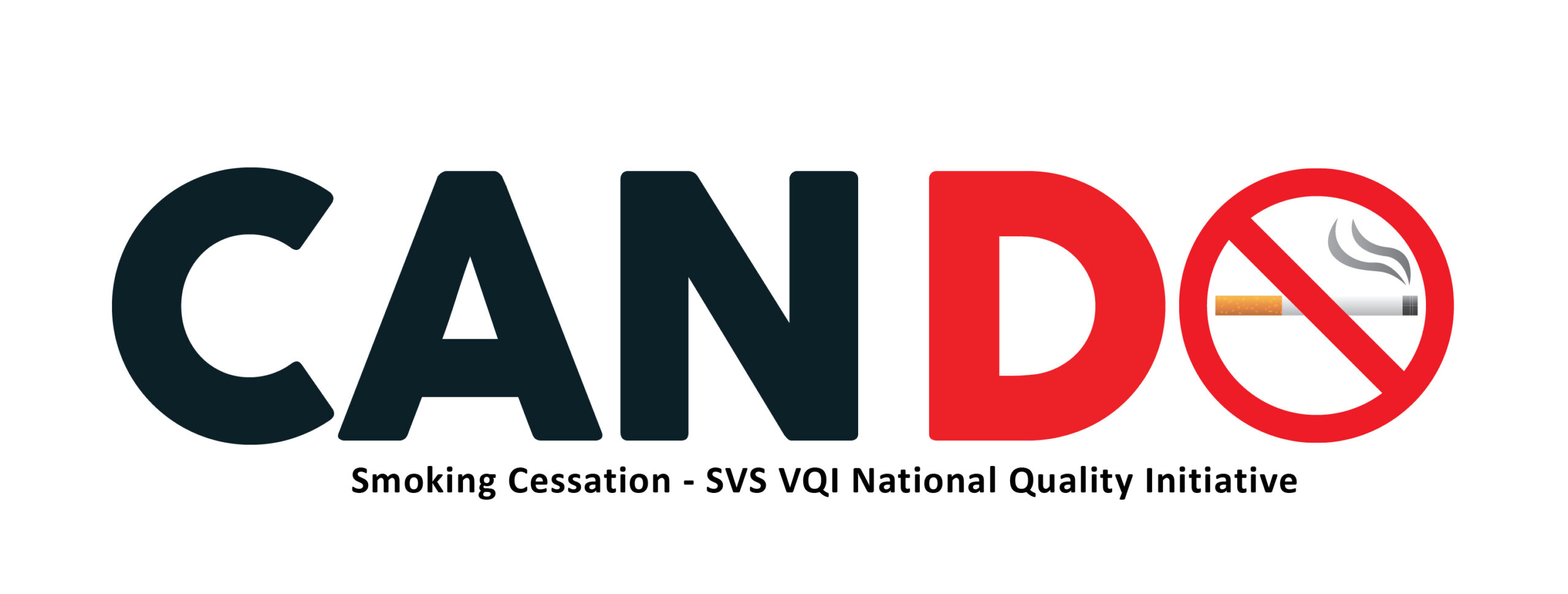Smoking Cessation

Most smokers know cigarettes can damage their lungs, but all too often, they have no idea that smoking is also bad for their blood vessels.
For too many smokers, the first they learn of the connection is when a vascular surgeon diagnoses them with peripheral artery disease (PAD). The disease starts mildly with either no symptoms at all, or with leg pains when walking. If the patient continues poor lifestyle habits, like smoking, PAD slowly starves the toes, feet and legs (peripheral parts of the body) of oxygen, which can lead to gangrene and amputation if not treated.
Here are three ways that cigarette smoke damages blood vessels:
- Nicotine is a stimulant, which speeds up the heart by about 20 beats per minute with every cigarette. It raises blood pressure and is a vasoconstrictor, which means it makes arteries all over the body become smaller. That makes it harder for the heart to pump blood through the constricted arteries and it causes the body to release its stores of fat and cholesterol into the blood.
- Smoking accelerates the hardening and narrowing process in arteries. Stiff, narrowed arteries are common in elderly people, but for smokers that process starts earlier, effectively giving them “old” arteries.
- It increases “bad” cholesterol (low-density lipoprotein) and decreases the “good” cholesterol (high-density).
“Getting our patients to quit smoking is probably the most important thing we can do, probably even more than any surgery we would talk about,” said Dr. Matthew Edwards, a vascular surgeon with Wake Forest University School of Medicine. The majority of his vascular patients will think about quitting when faced with their vascular disease, he said, but at least a third have no interest.
Research has shown that smokers have far more surgical complications, and many surgeons are reluctant to operate on them unless it’s an emergency. Smoking cessation before surgery is recommended by the Society for Vascular Surgery and the American College of Cardiology among others.

Physician resources
- Final Smoking Cessation Information – Dr. Kenton Rommens and Naomi Wedel, PGY1 with Alberta Health Services
- Smoking Cessation Quick Tips – Dr. Kenton Rommens and Naomi Wedel, PGY1 with Alberta Health Services
- Long-term outcomes after lower extremity bypass in the actively smoking claudicant
- Cytisinicline to Speed Smoking Cessation in the United States – JAMA Original Investigation
- Cytisinicline for Smoking Cessation – A Randomized Clinical Trial
- VAPOR Trial Report 2017
- Ecigarette/Vaping Products Visual Dictionary – 508[5039]
- Patient Smoking Cessation Infographic 4.27.23
- SVS Rewrite Smoking Page
- Treatment of Smoking Cessation Review by Rigotti
- Smoking Cessation Algorithm and Billable Codes
Physician resources for patients
- Smoking Cessation Patient Toolkit Presentation
- 1800QUITNOW, Tips on How to Quit Smoking, Tips from Former Smokers
- What the Society for Vascular Surgery (SVS) Wants You to Know About Smoking
- SVS Smoking Cessation – Patient Facing Flier
- How to Make a Plan to Quit Smoking, Free Confidential Smoking, Counseling, Texting Programs, Mobile Apps
- Cessation Materials, Insurance Coverages, Quitlines, References
- Basic Information, Health Effects, Secondhand Smoke, Electronic Cigarettes
- 5 Steps to Quit Smoking and Vaping, Fact Sheets on How to Quit Smoking, Cardiac Rehab and Quitting Smoking
- Tools & Tips, Build Your Quit Plan, Using Nicotine Replacement Therapy, Smokefree Social Media, How to Manage Cravings, Benefits of Quitting, Tips for Slips, Coping with Stress without Smoking
- World Health Report: Reducing Risks and Promoting Healthy Life
- E-cigarettes, Electronic Delivery Nicotine System (ENDS), Electronic Delivery Non-Nicotine System (ENDDS)
RESOURCES FOR CANADIAN PATIENTS
- Final Smoking Cessation Information – Dr. Kenton Rommens and Naomi Wedel, PGY1 with Alberta Health Services
- Smoking Cessation Quick Tips – Dr. Kenton Rommens and Naomi Wedel, PGY1 with Alberta Health Services
- CANADA Quit Smoking Number: 1-866-366-3667
- CANADA: Quitting smoking – Provincial and territorial services
- https://www.canada.ca/en/health-canada/services/smoking-tobacco/quit-smoking/provincial-territorial-services.html
- https://www.canada.ca/en/health-canada/services/smoking-tobacco/quit-smoking/help-someone.html
- https://www.healthlinkbc.ca/mental-health-substance-use/quitting-smoking/quitting-smoking-getting-support
- https://cancer.ca/en/living-with-cancer/how-we-can-help/get-help-to-quit-smoking
- https://www.hss.gov.nt.ca/en/services/health-effects-tobacco/nwt-help-line-here-you
- https://www.ontario.ca/page/support-quit-smoking
- https://myhealth.alberta.ca/Health/Pages/conditions.aspx?hwId=qtsmk
RESOURCES FOR PUERTO RICO PATIENTS
- Puerto Rico Quit Line 1-877-335-2567 or 1-800QUITNOW
- https://www.ncbi.nlm.nih.gov/pmc/articles/PMC2763363/
- https://www.cdc.gov/tobacco/features/quitlines/index.html
- https://map.naquitline.org/profile.aspx?stateid=pr
- https://www.lung.org/help-support/lung-helpline-and-tobacco-quitline
RESOURCES FOR SINGAPORE PATIENTS
- Singapore Quit Line 1-800-438-2000 or 1-800QUITNOW
- https://www.nus.edu.sg/uhc/resources/articles/details/quit-tips
- https://www.hpb.gov.sg/newsroom/article/there’s-no-better-time-to-say-i-quit-smoking
- https://www.taco.gov.hk/t/english/whocc/whocc_singapore.html
New Reporting Measures
For the Spring 2023 reporting cycle, two new measures were added in anticipation of the new National Quality Initiative of Smoking Cessation.
Preop Smoking
Includes elective CAS (TFEM CAS and TCAR), CEA, EVAR, INFRA, LEAMP, OAAA, PVI, SUPRA, and TEVAR procedures only.
Preop Smoking is the number of procedures meeting the inclusion criteria, and the percentage of those procedures where the patient was still smoking within one month of the procedure.
Smoking Cessation
Includes CAS (TFEM CAS and TCAR), CEA, EVAR, HDA, INFRA, LEAMP, OAAA, PVI, SUPRA, and TEVAR procedures performed on patients still smoking within one month of the procedure. Excludes procedures that do not have at least one long-term follow-up record where the patient’s follow-up smoking status was recorded.
Smoking Cessation is the number of procedures meeting the inclusion criteria, and the percentage of those procedures where the patient was not smoking within one month on follow-up for all long term follow-up records where the patients follow-up smoking status was recorded.
